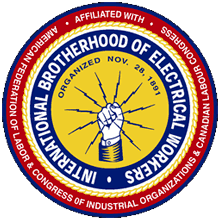April 26, 2013
By Marc Bussanich
Washington, D.C.—President Barack Obama recently proposed a $3.8 trillion budget for FY 2014 that includes $6.6 billion for repairing and expanding the national rail system and up to $40 billion over a five-year period. But at a House Appropriations subcommittee hearing, the subcommittee’s chairman told Joseph Szabo, the Federal Railroad Administrator, that the administration’s request was ridiculous. Watch Video
President Obama first called for funding a national high-speed rail network back in 2009 with $8 billion of seed money to jumpstart the system. But the program hasn’t received federal funds since 2010 and this year’s sequestration has already siphoned off 5 percent cuts across the board from Amtrak’s operations.
But Szabo told a House Appropriations subcommittee on transportation that passenger rail has to be put on parity with other transportation modes because the county’s highways and airports are congested, and passenger rail ridership is breaking records and demand will keep growing as the country’s population keeps growing.
In 2012 Amtrak had a record ridership of more than 31.2 million, and March set a record as the single best month ever in Amtrak’s history, according to the National Passenger Railroad Corporation.
Szabo described the FRA’s FY 2014 budget proposal as a bold initiative because it attempts to rebalance the nation’s transportation system after decades of underinvestment in rail. For example, the federal government has invested more than $400 billion in the nation’s interstate highway system since its inception in 1956, but less than $40 billion in Amtrak from its founding in 1976 to 2008.
President Obama has proposed $50 billion in the FY 2014 budget for transportation infrastructure, and the FRA wants to distribute $6.6 billion for a National High Performance Rail System (NHPRS) that would consolidate existing rail programs such as the one President Obama announced in 2009 for 10 high-speed inter-city corridors.
Within NHPRS are two interlinked programs—$2.7 billion for the Current Passenger Rail Service (to maintain the current rail network serviced by Amtrak) and $3.66 billion for the Rail Service Improvement Program (to expand and improve the passenger and freight rail network).
The rail improvement program is intended to support high-speed rail networks by building new corridors and making substantial improvements to existing corridors such as the Northeast Corridor (NEC).
The busiest rail corridor in the country, Amtrak shares NEC track with multiple commuter rail and freight operators.
Amtrak has ambitious and aggressive plans to upgrade the NEC, calling for $151 billion to build a high-speed rail network that rivals speeds in Europe and Asia.
Although the FRA’s budget proposal is separate from Amtrak’s, Szabo said that inter-city passenger rail is the fastest growing ridership mode of transportation today in the nation.
“All you need to do is take a look at the ridership records that Amtrak set 9 out of the last 10 years. This last year, again, there’s an all-time ridership record and it’s in every segment of the system—the NEC, state corridors and long-distance routes. People are voting with their feet. They want to ride inter-city passenger rail,” said Szabo.
Buttressing Szabo’s claim that intercity rail ridership is breaking records, the Brookings Institution released a report in January, A New Alignment: Strengthening America’s Commitment to Passenger Rail, which argues American passenger rail is in the midst of a renaissance.
But to keep the momentum going, the report notes the country’s emphasis on fiscal responsibility shouldn’t preclude new and innovative investments.
“The upcoming reauthorization and finalization of a national rail plan on the federal level, coupled with increased attention on the role of passenger rail in states, makes this the right time to focus on the future of Amtrak, despite the fiscally constrained times.”
Follow Marc Bussanich on Twitter marc@laborpress.org



